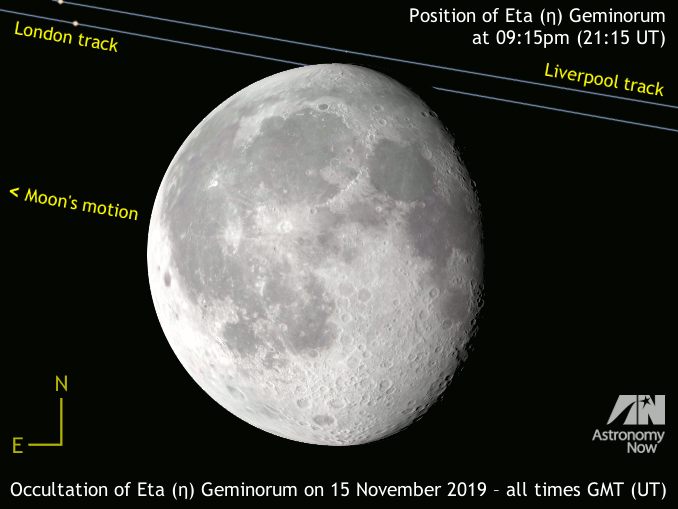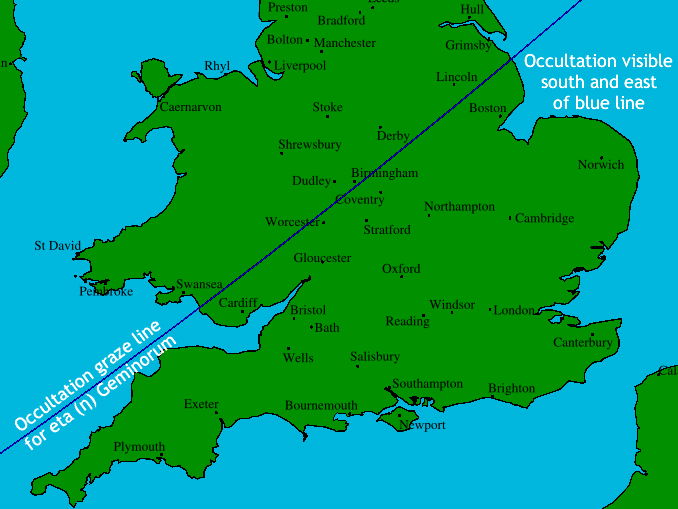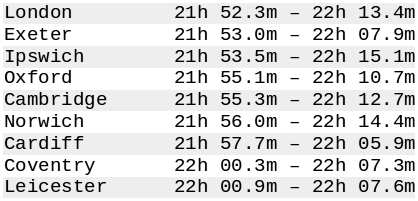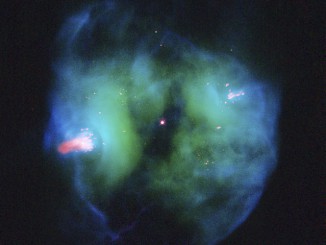
The occultation takes place some 30 degrees above the UK’s eastern horizon, the star disappearing at the bright lunar limb and reappearing at the Moon’s darkened edge. As with all occultation observations, it pays to be setup and scrutinising the Moon a few minutes before the predicted times of the nearest location to you (see below for a table of selected locations in the British Isles).
For those lucky observers who happen to live on a line drawn between Porthcawl on the Welsh coast through just south of Birmingham and on to the Lincolnshire Wolds, this is going to be a grazing lunar occultation. This means if you are situated exactly on the graze line (see the diagram below), the star will appear flicker in and out of sight as it is alternately hidden by mountains on the northern limb of the Moon then exposed again as it shines through a lunar valley, affording an awesome demonstration of the Moon’s orbital motion.

If the seeing is good enough, can you resolve the pair in 10-cm (4-inch) aperture telescopes and larger at magnifications of around 200×? If so, the fainter companion star is occulted (and reappears) just prior to the brighter primary star.
A bonus occultation, night of 15-16 November
If the clouds part long enough for you to enjoy η Geminorum’s brief passage behind the Moon and the weather is still favourable around 3½ hours later, you can witness a lunar occultation of somewhat brighter star mu (μ) Geminorum close to 1:30am GMT on 16 November. Also known by the proper name Tejat, the entire British Isles can potentially see this magnitude +2.9 star occulted by the Moon. Selected disappearance and reappearance times (GMT/UT) are as follows: London (01:31.3am, 02:48.6am); Dublin (01:24.7am, 02:40.2am); Edinburgh (01:31.3am, 02:44.9am).
A repeat performance
If you miss the occultation of η Geminorum this time around owing to weather or location, you get another opportunity in the pre-dawn of Friday, 13 December. On that morning, the 15-day-old, just-past-full Moon occults the star as seen from the entire British Isles with the exception of Mainland Orkney and the Shetland Islands.



